Stages of Flight Attendant Selection Test
Stewardess is a cabin crew member whose job is to ensure the safety and comfort of passengers during the flight. The main task of the flight attendant includes various aspects of service on airplanes.
The stages of the flight attendant selection test are usually quite tight and involve several stages to ensure candidates have skills, attitude, and performances that match the airline standards. The following are the general stages that are usually passed in flight attendant selection:
Stewardess registration stages
The stages of flight attendant registration involved several steps designed to assess their capabilities, qualification, and matching flight attendants with airline standards. The following are the general stages in the flight attendant registration process:
- Recruitment Announcement:
- Airlines announce flight attendants through their official website, social media, or recruitment agent. This announcement usually includes the requirements and qualifications needed.
- Online registration:
- Prospective flight attendants fill out online registration forms on the airline website. This form usually includes personal information, educational history, work experience, and contact information.
- Document delivery:
- Candidates are asked to upload supporting documents such as CV, latest photos, education certificate, and other relevant documents. Some airlines may also ask for a motivational letter.
Stages of the flight attendant administrative selection test
The stages of the flight attendant administrative test are the initial stages in the selection process that aims to assess the completeness and suitability of the documents submitted by prospective flight attendants. Following are the general steps in the stages of the flight attendant administrative test:
- Document Collection:
- Prospective flight attendants are asked to collect and upload necessary documents, like:
- Curriculum vitae (CV) or resume.
- Latest photos (usually a passport and full body size).
- Photocopy of Identity Card (ETC) or other identity.
- Photocopy of the last diploma and transcript.
- Relevant certificates (for example, English certificate, flight attendant training, dll.).
- A letter of proposal.
- Health Certificate from a doctor.
- Prospective flight attendants are asked to collect and upload necessary documents, like:
- Check the completeness of the document:
- The recruitment team will check whether all requested documents are complete and in accordance with the requirements specified by the airline.
- Verification of information:
- Information contained in documents such as personal data, educational history, and work experience will be verified to ensure the truth.
- Some airlines may contact previous educational institutions or workplaces for further verification.
- Assessment of basic qualifications:
- The recruitment team will assess whether the candidate meets the basic qualifications required, like:
- Age.
- Height and weight in accordance with established standards.
- Minimum education level.
- Language skills (often English is the main requirement).
- The recruitment team will assess whether the candidate meets the basic qualifications required, like:
- Selection based on additional criteria:
- Airlines can also have additional criteria such as work experience in the service industry, communication skills, appearance, and others to be assessed from the proposed documents.
- Announcement of Administrative Selection Results:
- Candidates who pass administrative selection will be notified via email, telephone, or official announcements on the airline website.
- Those who qualify will be invited to follow the next selection stage, like the appearance test, medical check up, psychological tests, English test, and interviews.
This administrative test stage is very important because it determines whether the candidate meets the basic requirements to continue to the next selection stage. Therefore, important for prospective flight attendants to ensure the proposed documents are complete, Correct, and in accordance with the requirements set by the airline.
Stages of Appearance and Height Selection Test
The stage of appearance and height tests are an important part of the flight attendant selection process. This test aims to ensure that prospective flight attendants meet the physical standards set by the airline, and has a neat and professional appearance. Following are the general steps in this stage:
- Registration and verification of identity:
- Prospective flight attendants will be asked to re -register and show their identity (KTP or other identity documents) when arriving at the test location.
- High measurement and weight:
- Candidate height will be measured to ensure the minimum and maximum requirements set by the airline. Usually, There are different minimum height standards for men and women.
- Body weight is also measured to ensure the ideal body proportion. Many airlines have a body mass index (BMI) desired to ensure the candidate is in good health condition.
- Physical appearance examination:
- A general examination is carried out to assess the physical appearance of the candidate. Aspects assessed include:
- Personal cleanliness (nail, hair, skin, dll.).
- Hair Appearance (must be neat and in accordance with airline standards).
- Skin condition (Usually expected to be free from striking scars or tattoos that are seen when wearing uniforms).
- Gigi appearance (preferably neat and clean).
- A general examination is carried out to assess the physical appearance of the candidate. Aspects assessed include:
- Posture tests and posture:
- Candidates will be asked to walk, stand, and sit with a good posture. Good posture shows self -confidence and professionalism.
- Candidates may be asked to do certain movements or poses to assess their flexibility and alertness.
- The overall rating of appearance:
- The overall assessment of appearance includes how to dress, use of makeup (for women), and the way candidates bring themselves. Neat appearance, polite, and professionals are highly valued.
- The airline usually has a special guide regarding clothes that must be worn during the test, such as formal clothing or business attire.
- Announcement of the results of the performance test and height:
- The results of this test are usually announced on the same day or several days after the test. Candidates who pass will continue to the next selection stage, like a medical test, psychological tests, and interviews.
Tips for preparing for appearance and height tests:
- Wear polite and professional clothes: Usually, It is recommended to wear formal clothing or business attire.
- Maintain cleanliness and personal appearance: Make sure the hair is neat, clean nails, And the skin looks healthy.
- Train body posture: Practice how to walk, stand, and sit with a good posture.
- Avoid excessive use of jewelry: Use a minimalist and not conspicuous jewelry.
- Pay attention to the airline guide: Some airlines provide special guidelines regarding the expected appearance during the selection process.
With good preparation, You can increase the opportunity to pass the appearance and height test stages in flight attendant selection.
Flight Attendant Health Test
The flight attendant health test is one of the critical stages in the selection process, Because this work requires excellent physical condition to ensure the safety and comfort of passengers during the flight. The following are the general stages in the flight attendant health test:
- General Physical Examination:
- High examination and weight to ascertain the ideal body proportion.
- Examination of blood pressure and heart rate to assess cardiovascular conditions.
- General examination of the body's condition to detect abnormalities or health problems.
- Vision Test:
- Visual acuity check (either with or without glasses or contact lenses).
- Color blind test to ensure there is no problem in distinguishing colors, which is important to read safety indicators and lights on the plane.
- Hearing Test:
- Hearing examination using an audiometer to make sure the candidate can hear clearly, which is important for communication on flights and in an emergency situation.
- Ear examination, Nose, and Throat (THT):
- Ear condition examination, nose, and throat to make sure there are no infections or conditions that can interfere during the flight.
- Laboratory test:
- Blood test to check general health, including hemoglobin levels, blood sugar, cholesterol, and liver and kidney function.
- Urine test to detect infection or other health conditions.
- Lung and breathing test:
- Examination of lung function to ensure that candidates have a good breathing capacity.
- Spirometry test to measure the volume of air that can be exhaled and inhaled by the lungs.
- Heart Check:
- Electrocardiogram (EKG) to check the rhythm and electrical activity of the heart.
- Tes treadmill (if needed) to assess the heart response to physical activity.
- Dental Checkup:
- Examination of the condition of the tooth and mouth to ensure there are no serious health problems that can interfere when on duty.
- Mental health test:
- Psychological evaluation to assess mental health and the ability to overcome stress, which is important to face an emergency situation and work in a dynamic environment.
- Women's health checks (For a female candidate):
- Reproductive health examination, including pap smear if needed.
Tips for preparing a flight attendant health test:
- Keep your diet and a healthy lifestyle: Eat nutritious food, enough rest, and exercise regularly.
- Avoid smoking and drinking alcohol: This habit can affect the results of health tests, especially the function of the lungs and liver.
- Check health regularly: Perform regular health checks to detect and handle health problems as early as possible.
- Prepare medical documents: If you have a certain medical history, bring documents or certificates from the doctor.
With good preparation and maintaining overall health, You can increase the opportunity to pass the health test in the flight attendant selection process.
Stewardess Psychology Test
Stages of the Stewardess Psychology Selection Test are an important part of the selection process to assess personality, thinking ability, emotional stability, and the mental readiness of prospective flight attendants. This test is designed to ensure that the candidate has the nature and skills in accordance with the demands of the work. Here are some types of psychological tests that are commonly carried out in flight attendant selection:
- Personality Test:
- This test evaluates the personality traits of the candidate, like leadership, cooperation, responsibility, and the ability to adapt.
- Personality tests that are often used are Myers-Briggs Type Indicator (MBTI) atau Big Five Personality Test.
- Cognitive test:
- Measure the ability to think logically, analytical, and problem solving.
- Including verbal abilities tests, numeric, and spatial.
- This test helps assess the ability of candidates to make decisions and solve problems under pressure.
- Psychometric test:
- This test measures psychological aspects such as the ability to adapt, stress management, and reactions to an emergency situation.
- Examples of psychometry tests are judgment situational tests and adaptability tests.
- Interpersonal ability test:
- Measure the ability to communicate, cooperation, and empathy.
- This test is often done through role games (role play) or a situation simulation in which candidates must show their interpersonal skills.
- Stress management test:
- Assessing the ability of candidates to manage stress and remain calm in high pressure situations.
- This test may involve a simulation scenario where candidates must show how they will handle an emergency situation or a difficult passenger.
- Psychological interview:
- Carried out by professional psychologists to evaluate mental health and the emotional stability of the candidate.
- The questions asked can include personal experience, how to deal with stress, and motivation to be a flight attendant.
Tips for preparing a flight attendant psychology test:
- Know Yourself:
- Take time to understand your personality and strengths and weaknesses. This can help you answer questions more honestly and confidently.
- Online test practice:
- Many personality tests and cognitive tests are available online for practice. Practicing this test can help you get used to the format and type of questions that might be faced.
- Sleep enough and manage stress:
- Make sure you sleep enough before the test day. Sleep that can help your cognitive and emotional performance during the test.
- Practice relaxation techniques or meditation to help manage stress.
- Be honest and authentic:
- Answer the question honestly and according to yourself. The airline is looking for an authentic candidate and in accordance with the value of their company.
- Learn stress management techniques:
- Recognize stress management techniques such as deep breathing, positive visualization, and other relaxation techniques.
- Prepare yourself for psychological interviews:
- Prepare answers to common questions about your experience, how you face a stressful situation, and your motivation to be a flight attendant.
With good preparation and understanding of the type of test to be faced, You can increase the chances of success in the flight attendant psychology test.
Stewardess English Selection Test
English attendant English test is one of the important stages in the selection process because English is an international language that is often used in flights. This test is designed to assess the ability of candidates to communicate in English, both verbally and in writing. The following are the general stages in the flight attendant English test:
- Written test:
- Grammar and vocabulary: Questions that test the understanding of grammar and vocabulary. This can be a multiple choice, stuffing, or error correction in sentences.
- Reading Comprehension: Read text or articles and answer questions related to the contents of the text. This test measures the ability to understand written information in English.
- Listening test (Listening Test):
- Candidates will listen to audio recordings, like a flight conversation or announcement, and answered questions based on what they heard. This test measures the ability to understand English spoken in real situations.
- Speaking test (Speaking Test):
- Interview: Candidates will be interviewed in English by the interviewer. Questions can include general topics, work experience, Motivation to be a flight attendant, and situations that might be faced during the flight.
- Role Play: Simulation of a situation where candidates must act as flight attendants and interact with passengers or coworkers in English. This measures the ability of practical communication and interpersonal skills.
- Writing test (Writing Test):
- Candidates may be asked to write short essays or paragraphs on certain topics, Like the reason to be a flight attendant, experience working in the service industry, or flight -related scenarios. This test measures the ability to write clearly and effectively in English.
Tips for preparing for the flight attendant English test:
- Expand exercise:
- Use online resources to practice grammar tests, vocabulary, and reading understanding.
- Listen to the podcast, news, or videos in English to improve listening skills.
- Practice speaking:
- Practice speaking in English with friends or through the Language Learning Group. Focus on speaking, intonation, and smooth speaking.
- Record yourself while speaking in English and your self -evaluation for improvement.
- Read and write regularly:
- Read the article, book, or magazines in English to increase understanding and expand vocabulary.
- Practice writing essays or paragraphs about various topics to improve writing skills.
- Attend English classes:
- If possible, take an English course to improve language skills as a whole, including grammar, error cut, listen, and speak.
- Listening test preparation:
- Listen to various types of accents in English to familiarize your ears. International flights involved a variety of different accents.
- Stay calm and confident:
- On the test day, Make sure you are calm and confident. Don't rush in answering questions and make sure you understand the questions before giving an answer.
With good preparation, You can increase the opportunity to succeed in English tests and step closer to becoming a flight attendant.
HRD and User Interviews
HRD Interview (Human Resources Department) and the user is an important stage in the flight attendant selection process. This interview aims to assess skills, personality, motivation, and compatibility of candidates with corporate culture and job demands. The following is a more detailed explanation of the two types of interviews and tips for preparing it:
HRD Interview
Objective:
- Evaluating the personality and character of the candidate.
- Assessing compatibility with corporate culture.
- Understand the motivation of candidates to become flight attendants.
- Ensure that candidates meet the basic criteria sought by the company.
General Questions:
- Tell me about yourself.
- Why are you interested in becoming a flight attendant?
- What do you know about our company?
- Tell your experience that is relevant to this job.
- How you handle stress or emergency situations?
- How do you work in the team?
- What are your strengths and weaknesses?
- How you handle conflicts with coworkers or passengers?
Preparation Tips:
- Recognize the company: Learn about airlines, everyone, mission, and company values.
- Self -training training: Train how to tell your experience and background clearly and briefly.
- Relevant answers: Focus on experience relevant to the work of the flight attendant.
- Prepare an example: Prepare a concrete example of work experience or personal life that shows your abilities.
User interview
Objective:
- Evaluate the technical and specific abilities needed for work.
- Assess customer service skills.
- Ensure the readiness of candidates to face the daily situation on flights.
General Questions:
- How you handle passengers who are angry or dissatisfied?
- What will you do if there is an emergency on the plane?
- Tell your experience in providing extraordinary customer service.
- How do you manage time during a busy flight?
- What will you do if you see a colleague violating the safety procedure?
- How do you make sure that all passengers feel comfortable during the flight?
Preparation Tips:
- Practice simulation: Practice the scenario that you might face as a flight attendant.
- Show customer care: Give answers that indicate empathy and skills in customer service.
- Focus on safety: Understand safety procedures and show your commitment to passenger safety.
- Readiness for multitasking: Show your ability to manage various tasks efficiently and effectively.
Common tips for both interviews
- Look neat and professional: Wear formal clothes and maintain personal hygiene.
- Take care of the body language: Greetings with a smile, Make eye contact, and sit with a good posture.
- Answer clearly and calmly: Listen to the question carefully, Answer clearly, And don't rush.
- Show enthusiasm: Show your motivation and strong desire to be part of the airline.
- Prepare a question: Prepare a few questions for the interviewer, As about work culture or career development opportunities in the company.
With good preparation, You can increase opportunities for success in HRD and User Interviews, as well as stepping closer to becoming a flight attendant.
Tips for Passing the Stewardess Selection Test
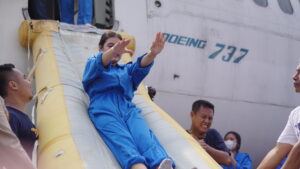
Here are some tips to help you pass the flight attendant selection:
- Prepare the document well:
- Make sure all the requested documents, Like CV, Photo, and certificate, complete and neatly organized.
- Include a application letter that highlights your motivation and relevant experience.
- Take care of Appearance:
- Wear professional and appropriate clothes when attending the test. Usually, neat and polite appearance is highly valued.
- Make sure your appearance reflects airline standards, for example neat hair, it is natural, and good posture.
- Health and Fitness:
- Take care of your physical and mental health. Perform routine health checks and remain active in exercising.
- Adequate rest before the medical test to ensure optimal body condition.
- Prepare English skills:
- Improve your English skills, both verbally and written.
- Train yourself by reading, write, and speak in English regularly.
- Learn airlines:
- Get to know the airline you are applying for, including history, values, and their service standards.
- Show this knowledge during the interview to show your interest and commitment.
- Interview Practice:
- Practice your answers to general interview questions such as "why you want to be a flight attendant?” or "What do you know about our company?”
- Practice interviews with friends or family to increase self -confidence and improve your way of speaking.
- Positive and friendly attitude:
- Show a positive attitude, ramah, and able to work in teams during the selection process.
- These traits are very important in the aviation industry that prioritizes customer service.
- Psychological and Cognitive Tests:
- Usually there is a psychological test to assess your personality and emotional stability.
- Prepare yourself by practicing psychometry tests and reading material about psychological tests.
- Take care of mental health:
- Stay calm and focus during the selection process.
- Practice relaxation techniques or meditation to reduce stress and maintain calm.
- Confidence and honest:
- Show self -confidence in every stage of selection.
- Be yourself and be honest in answering questions, Because honesty is highly valued in this profession.
With mature preparations and positive attitudes, You will have a greater chance to pass the flight attendant selection.
Read Also : Can graduates of high school/vocational school/MA be flight attendants?
Information on FAAST FAAST FAILING FLASE : Sister Melia 0857-7272-7722
If you have a different answer from the admin, Don't hesitate to write it in the comments column..

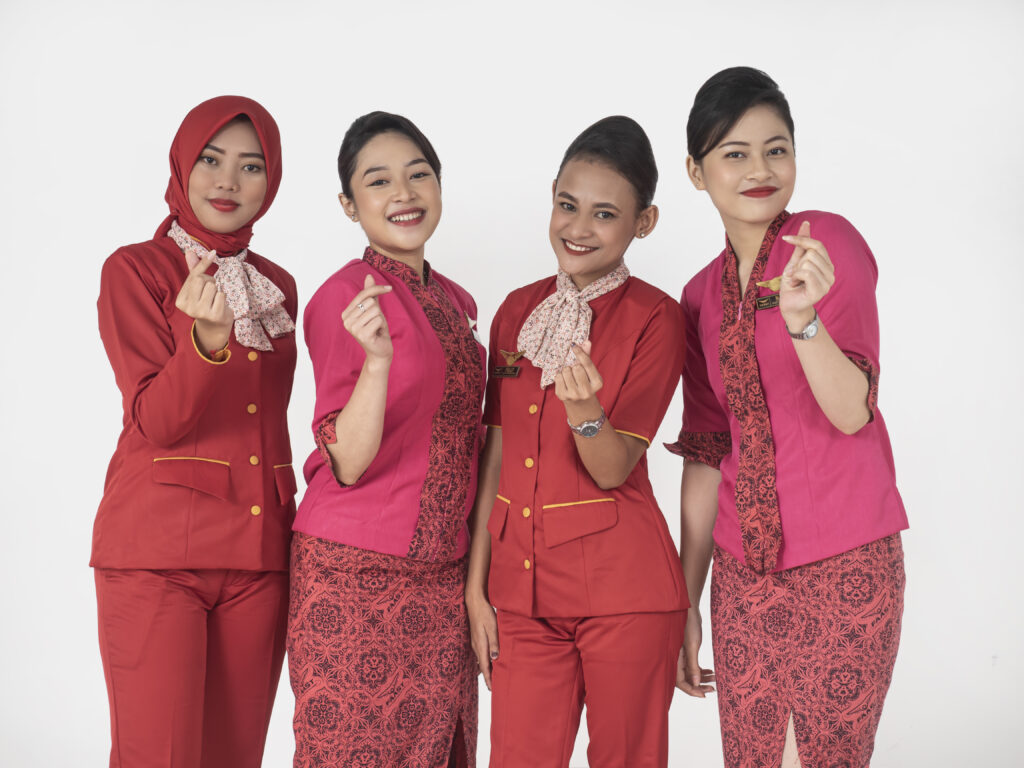



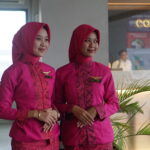
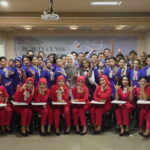
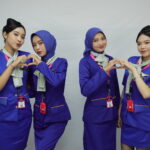
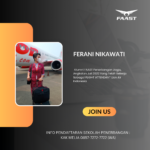
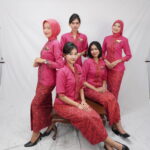
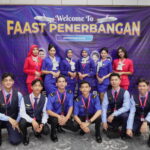
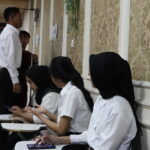


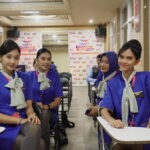
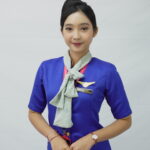


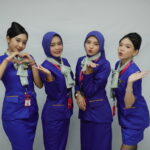
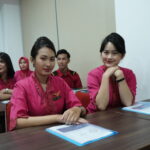
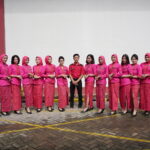
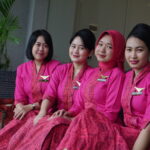
Leave a Reply